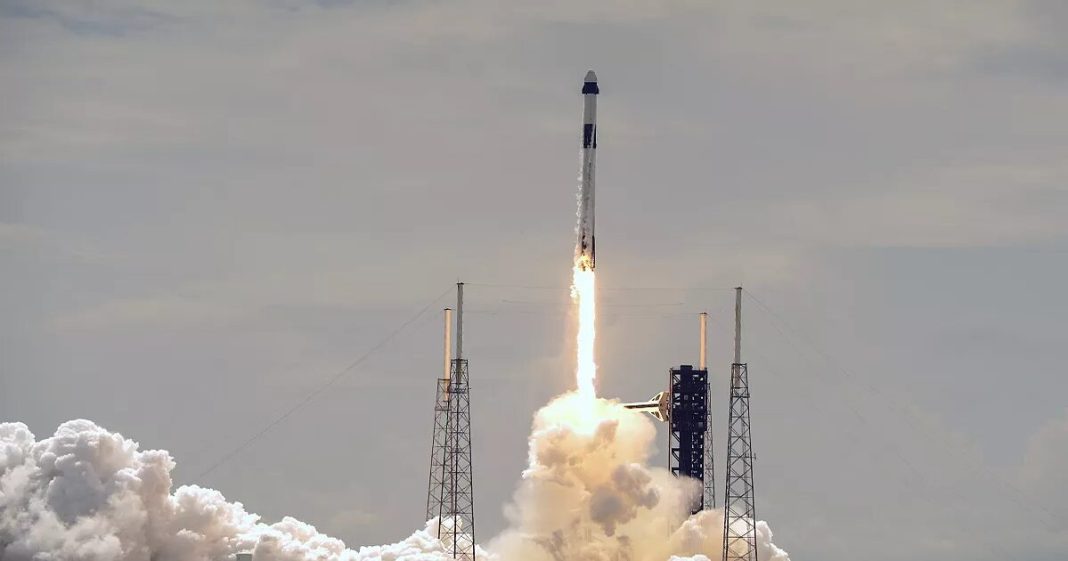In an impressive demonstration of space exploration’s growing dynamism, SpaceX successfully launched its Crew-9 mission on Saturday to bring back two astronauts stranded aboard the International Space Station (ISS). The mission, led by NASA and SpaceX, is not just a routine crew rotation but a rescue effort to retrieve astronauts who have been delayed in returning to Earth due to complications with another spacecraft.
Successful Launch Amid Challenges
The SpaceX Falcon 9 rocket lifted off from Cape Canaveral, Florida, at precisely 1:17 pm on Saturday, carrying NASA astronaut Nick Hague and Russian cosmonaut Alexander Gorbunov toward the ISS. The spacecraft, known as Dragon, is scheduled to return with Butch Wilmore and Suni Williams—two astronauts whose stay on the ISS was unexpectedly extended by months after technical issues were discovered in the Boeing-designed Starliner spacecraft.
Read More: Elon Musk reveals ambitious plan for SpaceX Mars missions
The Dragon made contact with the ISS at 5:30 pm Sunday, marking a crucial moment in this complex mission. Following the successful docking, Hague and Gorbunov boarded the ISS and greeted their fellow astronauts, paving the way for the next phase of the mission—the retrieval of Wilmore and Williams.
“What a fabulous day it was today,” said NASA Deputy Administrator Pam Melroy, celebrating the successful rendezvous during a press conference.
Stranding of Wilmore and Williams
Wilmore and Williams were originally scheduled to spend only eight days aboard the ISS, having arrived there in June 2024 on the Starliner’s first crewed flight. However, complications soon arose. During the flight, problems with the Starliner’s propulsion system surfaced, and additional issues were identified when the spacecraft attempted to dock at the ISS. Four of the Starliner’s 28 thrusters malfunctioned, delaying its docking and prompting NASA to reconsider the astronauts’ return.
After weeks of intensive testing, NASA determined that the Starliner was unsafe for a crewed return to Earth. As a result, the agency decided to abandon the spacecraft and turned to SpaceX to bring Wilmore and Williams home safely.
Delayed Mission
The SpaceX Crew-9 mission was originally scheduled for mid-August but was delayed due to NASA’s need to assess the Starliner’s reliability. The launch was further postponed by Hurricane Helene, which caused significant disruptions in Florida. After careful evaluation and some additional days of delay, Crew-9 finally launched on September 28, 2024.
With the Dragon spacecraft’s successful docking and Hague and Gorbunov safely aboard the ISS, the mission is proceeding as planned. Wilmore and Williams will now prepare for their long-overdue return, with their trip back to Earth scheduled for February 2025.
Scientific Contributions and Future Plans
In addition to the retrieval of Wilmore and Williams, the Crew-9 mission is set to conduct over 200 scientific experiments during its five-month stay aboard the ISS. These investigations will focus on a wide range of topics, including blood clotting studies, the effects of space environments on plant growth, and vision changes in astronauts. Such research is crucial for the long-term sustainability of space missions, particularly as space exploration moves toward longer stays on the Moon and potentially Mars.
Read More: SpaceX Delays Spacewalk Mission AGAIN
The successful launch and docking of the Crew-9 mission highlight the continued collaboration between NASA and SpaceX, both of which are pushing the boundaries of what’s possible in space travel. With new challenges like the Starliner’s issues and weather complications, this mission highlights the importance of flexibility and adaptability in the ever-evolving field of space exploration.













